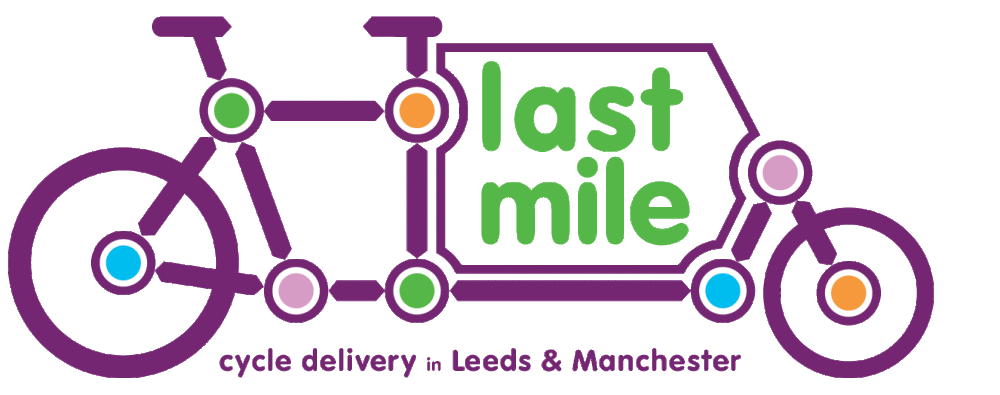Cargobikes: a taxonomy
It is clear that commercial users of cargo bikes have a huge variety of differing requirements. To some extent this might be determined by the bikes that they have within their fleet, but to a greater extent I suspect that they have tended towards bikes which fit the work in which they are engaged.
Any model of classification is subjective but here is my take on the selection available. My perspective is that of a commercial user, delivering mixed cargo on behalf of a major international courier. My taxonomy would classify cargo bikes into four categories:
Lightweights – standard bike with minor modifications or panniers or messenger bag
Photo: Chrome courier bag
The traditional cycle courier has always been prepared to carry more than just a handful of envelopes.A traditional road bike with panniers or just a really big over-the-shoulder messenger bag allows a courier to handle most single deliveries, or to accumulate several deliveries to be dropped off on a longer run. When a standard road bike is sufficient for this sort of work, and pretty much any courier will have their own bikes set up to their own preferences, why would anyone want to spend money on ‘cargobikes’ in this category? There are a few however. The traditional UK postie bike, the urban arrow has a ‘shortie’ option and the Yuba Mondo or the Xtracycle are modifications to a fairly standard bike which increase the pannier capacity.
I would argue that unless the bike you choose is exactly what you need for the work you are doing, then COST is likely to be one of the most critical factors effecting the choice of
such a bike, and indeed whether you would bother purchasing a designated cargo-bike to fill this category at all.
Middleweights; the workhorses of the cargobike world
 Photo: Bullitt cargo bike
Photo: Bullitt cargo bike
The next category of cargobikes is probably the area which has seen (and is seeing) the biggest growth. For any commercial delivery business there is a need for a bike able to carry a number of larger items with convenience and ease.
In view of the fact that these bikes will be expected to make large numbers of deliveries over significant distances then SPEED and EFFICIENCY are determining factors to consider when choosing a bike to fill this niche.
Heavyweights; load eaters
 Photo: Bellabike cargobike
Photo: Bellabike cargobike
These bikes are larger than the middleweights, generally sacrificing speed for increased volume. Their actual load capacity might not be dissimilar from the Middleweights in terms of weight, but they will usually have larger boxes with higher volumes. Due to their larger size they will typically have three-wheels which greatly increase stability making them a favoured choice of less confident cyclists and these are often the choice of those intending to carry young children as their cargo. As the boxes are not very much wider than those typically carried by the Middleweights they can usually access cycle infrastructure without problems. Three wheels can actually increase manoueverability at low speeds, but may reduce the ability to ‘filter’ through traffic. VOLUME and STABILITY tend to be the determining factors for cargobikes in this category.
Super – Heavyweights

Photo: cycle maximus cargobike
These are the largest cargobikes available, and are usually those which are readily converted to pedicabs. Many have modular designs which allow conversion between such applications with relative ease. The size of a small van they can carry payloads of 250kg or more, but to do so typically sacrifice the manoeuverability of a bike, and will often find themselves unable to access cycling infrastructure, and restricted to use on roads.
Although not always required, these cargobikes are often specified with electric assist as standard.
Although the specification of cargobikes usually includes the PAYLOAD WEIGHT, it is only when considering one of these behemoths that this is likely to be of primary consideration.
These categories are not necessarily rigidly defined, and depending on loads carried, different users might find different bikes slot into different niches. I would suggest that a bike will tend do one niche well, and can usually competently operate in an adjacent niche, but will not be generally effective if required to operate in a category not adjacent. Thus it follows that most fleets will require at least 2 types of cargobike, and looking across the industry this does seem to be the norm. Very few delivery firms operate a single machine – unless adjunct to other forms of transport such as motor vehicles etc.
I would go further, to suggest that most operators seem to choose majority Middleweights, with the addition of a smaller number of Heavyweights or Super-Heavyweights.

